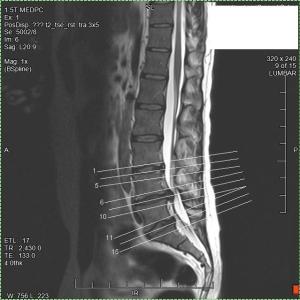All physiotherapists, osteopaths and chiropractors treat intervertebral disc problems. And yet, pain consultants up and down the country have waiting rooms full of people with back pain and neck pain, caused by disc-related problems.
Spinex Disc Clinic, a specialist back pain clinic in London helps patients caught in the back pain no-man’s land where standard manual therapy and exercise haven’t worked, and where they need something more for their pain without resorting to injections and/or surgery,
Causes and consequences.
When it comes to back pain, cause and consequence are quite similar. The cause of your back pain might be a herniated or slipped disc. However, the real cause of your herniated disc is one of a number of factors such as the compression of the disc from poor posture over a long period of time, combined with a lack of exercise and so on.
So the cause of the pain is actually the consequence of changes in the body which lead to the disc problem.
All clinicians treat the causes of pain, but first of all they treat the consequences of the causes of pain.
Where Spinex Disc Clinic and other IDD Therapy Spine Centres come in, is when the consequences of the causes of pain e.g severe compression and restricted mobility, are such that manual therapy alone is not able to address the problem.
The first things to do therefore is to take pressure off the disc and improve tissue function, then the focus can be on addressing the real causes which led to the problem.
In some ways it’s like obesity treatment.
The cause of obesity is a calorie surplus each day built up over time. The consequence of that is excess weight/ fat. First the person has to work hard to get rid of the excess fat and then they make lifestyle changes to ensure they stay at a healthy weight.
Now, the person will make the lifestyle changes as part of the process of losing weight but they have to work harder than normal because they need to burn more calories to cut the excess.
When it comes to disc treatment, for some patients lifestyle changes alone (improved strength, more activity, better posture etc) are not enough to undo the consequences / causes of the pain.
Spinex Disc Clinic is primarily focussed on those patients with disc problems who need something more than manual therapy.
Clinical Director Sally Lansdale is a highly experienced osteopath who finally resolved her long standing problem with a series of IDD Therapy treatments.
[youtube=http://www.youtube.com/watch?v=HYSH9JM4XBI]
Since then she has had two clinics offering IDD Therapy and now Spinex Disc Clinic is the evolution of those clinics now located in North West London, just off Edgware Road.
For more details about Spinex Disc Clinic, visit www.SpinexDiscClinic.com



![decompression[1]](http://steadfastclinics.files.wordpress.com/2013/02/decompression1.jpg?w=300)